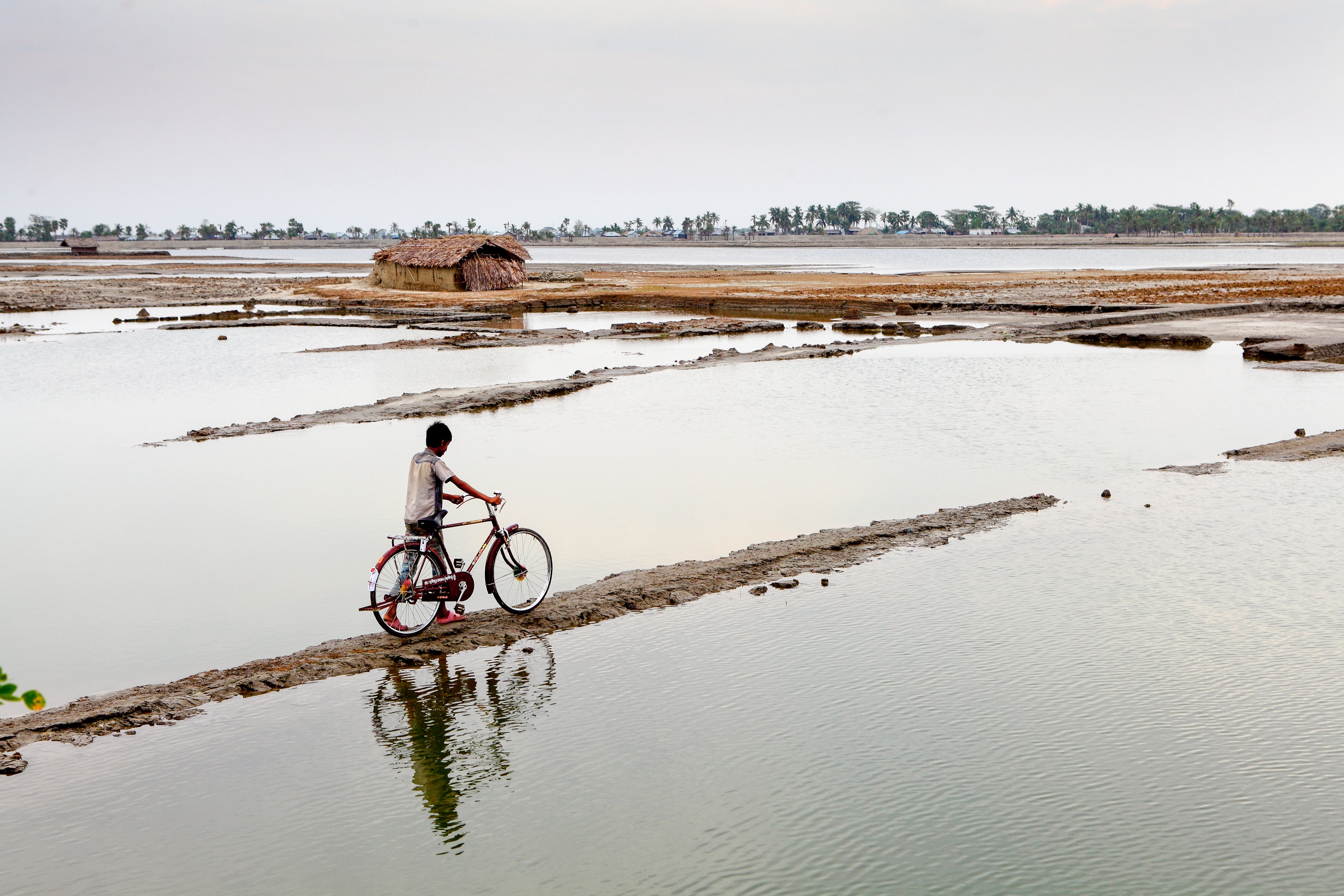For Asia-Pacific, climate change poses an ‘existential threat’ of extreme weather, worsening poverty and risks to public health, says UNDP report
December 7, 2023

Asia-Pacific countries experienced, on average, six natural disasters a year over the past three decades – about twice as many as developing countries of Latin America and the Caribbean and about three times as many as in sub-Saharan Africa.
Climate change poses a ‘profound existential threat’ for Asia and the Pacific, with the potential to disrupt decades of progress and burden future generations with the costs of unsustainable economic development, warns the latest Human Development Report covering the region.
Launched in November, the Making our Future: New Directions for Human Development in Asia and the Pacific report sees natural disasters, forced migration, the risk of pandemics and worsening poverty as some of the threats that could coalesce as the climate crisis worsens.
Rapid economic growth in Asia-Pacific contributed to lifting 1.5 billion people out of extreme poverty and supported human development progress in the span of three decades, but this growth has come at great cost to the planet, the Report observes.
Human development is about people, about expanding their opportunities and choices, and improving their well-being. When accounting for the ‘planetary pressures’ wrought by the economic development of the past decades, ‘the human development picture darkens, especially for the richer nations with larger ecological footprints,’ the Report notes.
In Asia-Pacific, fossil fuels still account for 85 per cent of all energy consumption. The region pans the entire spectrum of the climate cause-and-effect story today. Fast growing economies reliant on fossil fuels to meet growing energy demand are accounting for an ever larger share of global emissions. At the other end of the spectrum are the small Pacific Island States, which contribute only 0.01 percent to global emissions but must grapple with immediate and existential threats such as rising sea levels.
“The region urgently needs to transition towards carbon-neutral and climate-resilient development,” says the Report. This should support people currently suffering the impacts of climate change while also fulfilling our responsibilities to future generations.
“By fostering a people-first policy and smart growth strategies that value our natural assets, we can pave the way for a future that is not only more secure and peaceful but also sustainable and prosperous for many millions more,” said Kanni Wignaraja United Nations Assistant Secretary-General and UNDP’s Regional Director for Asia and the Pacific.
The Report highlights untapped economic opportunities in the low carbon ‘green economy’ and sustainable technologies for the region, emphasizing the importance of economic growth but envisioning a shift to the ‘right kind of growth.’
But climate commitment is weakening in the region, the Report warns. The slowdown caused by COVID-19 reduced carbon emissions briefly, but they are on the rise once more.
Some of the major routes through which the Report sees climate change impact the prospects of human development in Asia and the Pacific include:
Extreme Weather
Asia-Pacific countries experienced, on average, six natural disasters a year over the past three decades – about twice as many as developing countries of Latin America and the Caribbean and about three times as many as in sub-Saharan Africa.
In 2022 alone, extreme weather events are linked to over 7,500 deaths, affecting over 64 million people, and causing economic damage estimated at US$57 billion. Countries with higher poverty rates are also the ones most susceptible to disasters.
Declining Biodiversity
The planet’s biodiversity is threatened due to habitat loss, pollution, overexploitation, and invasive species, linked to the same factors causing climate change.
Since 1970, the Asia-Pacific region has seen the third-largest biodiversity decline in the world after Latin America and Africa. Such ecological and environmental pressures pose increasing risks for the hundreds of millions of people in the region who depend on forests for their health and livelihoods.
The Next Pandemic?
Climate change is leading to new health challenges. Changing temperatures and weather patterns heighten the risk of infectious diseases, including pandemics, while loss of biodiversity and pressures on nature could fuel zoonotic diseases.
And the risk of a large-scale pandemic of the COVID-19 kind within the next 25 years has reached as much as 50 percent, and it continues to rise year by year. Given its high population density and connectivity to the rest of the world, the Asia-Pacific region lies at the heart of these challenges.
Rising Sea Levels
A large part of the Asia-Pacific economy is dependent on its coastlines, with key industries such as tourism, fishing, and trade being concentrated in coastal areas. Asia and the Pacific is home to 70 percent of the global population susceptible to sea-level rise, and about one-third of total employment is in natural resource-based sectors conditioned by climate, such as agriculture and fisheries.
The region has six of the world’s largest coastal mega-cities, including Tokyo and Mumbai. This economic dependence on coastal regions amplifies the potential impacts of coastal hazards on the region’s economies and livelihoods.
Climate migration
In 2022, disasters led to 32.6 million internal displacements worldwide, 41% higher than the past 10-year average. Most were due to weather-related hazards, with Asia-Pacific accounting for 70% of the total. Climate Migration is widespread in Asia-Pacific. Climate change-induced disasters threaten the most vulnerable, disrupting livelihoods, endangering health, and reducing job opportunities and social capital.
In sum, not only is the Asia-Pacific region a key contributor to climate change, it is also very much at the receiving end of it. From both angles, it is imperative that climate action is scaled up so we can give future generations the future they deserve.
The full report can be accessed at this link: https://www.undp.org/asia-pacific/rhdr2024

 Locations
Locations




